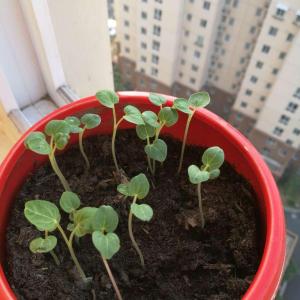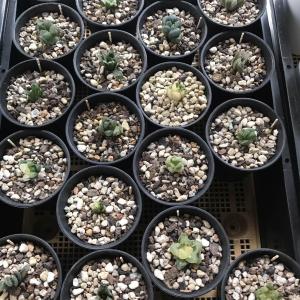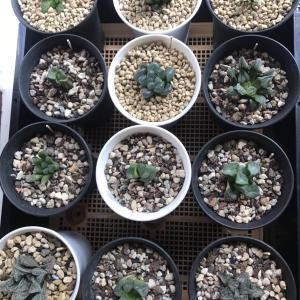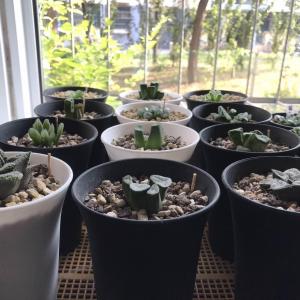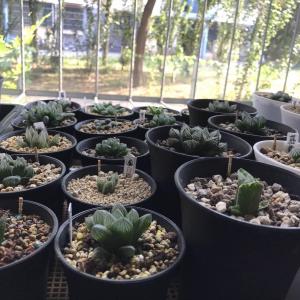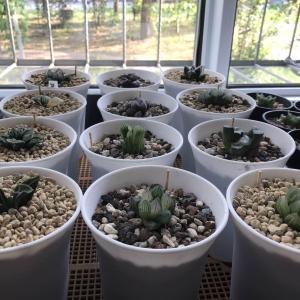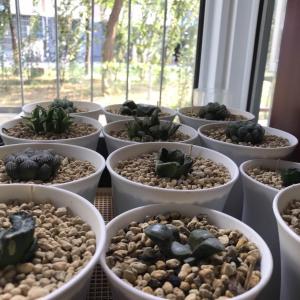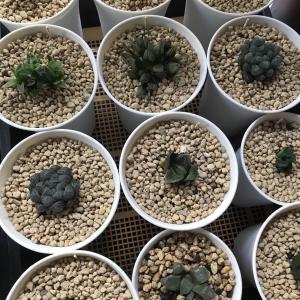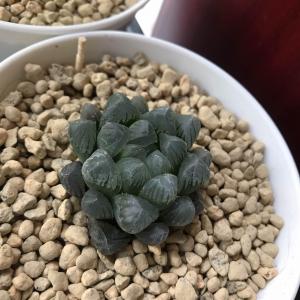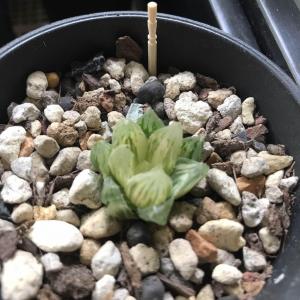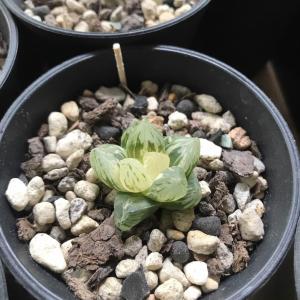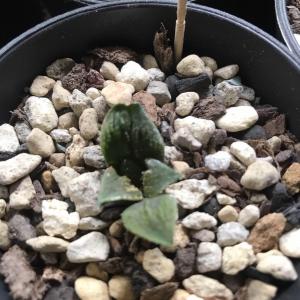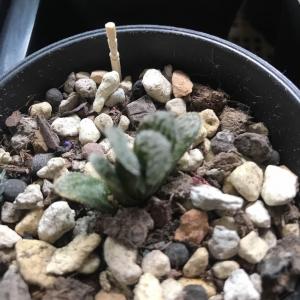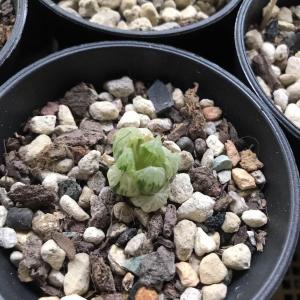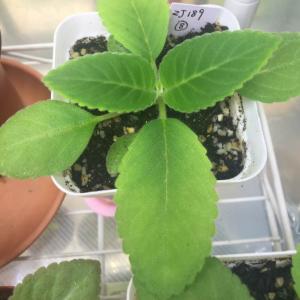文章
权问薇
2017年09月12日

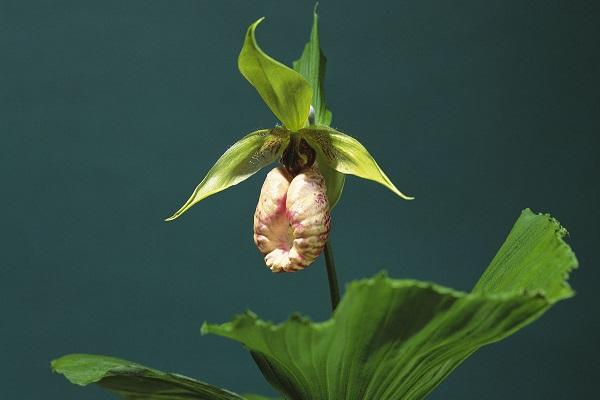
花盆与土壤的选择
#杓兰 最佳栽种时期是每年的3月至4月,秋天的10月至11月进行。杓兰需要透气的环境,所以在选择花盆时尽量选择素烧的陶瓷花盆,不建议使用塑料花盆与带有花纹图案的陶瓷盆。在土壤的选择方法,尽量使用原生态土。
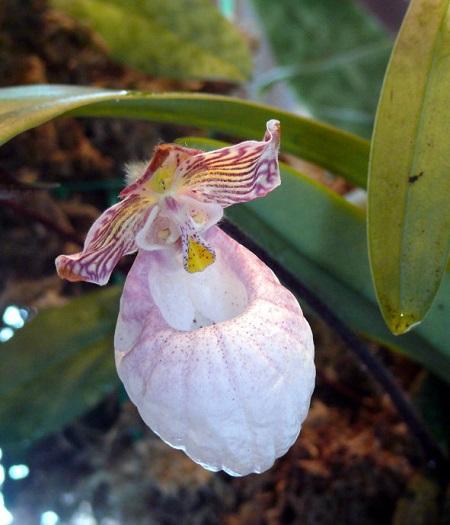
温度
杓兰的最佳生长温度是10度至20度之间,若温度超过25度,要立即进行降温,不然杓兰很容易被热死。在我国的南部与北部,在气温过高时,要移至有冷空气的室内生存,不然很难养殖成功。
浇水
杓兰在生长期内稍微缺水,便可导致期健康受损。所以要勤观察,若土壤有八分干的状态,刚需要浇水。每次浇水时一定要浇透。浇水的次数要根据土壤的干湿度而定。

光照
在阳光过强时,要做好适当的庇荫。想让杓兰晒阳关可以选择在上午9点之前,与下午6点之后进行。但在炎热的夏季,无论何时都不要使阳光直晒。
种植及培土
栽种前要先把新发出芽的枝条中的老旧叶子剪除干净,把已经腐烂根茎剪除。然后把已经处理好的带有新发芽的枝条平放在花盆里,上面覆盖薄土,要将新发的芽全部露出即可。最后用泡过水的白苔铺在花盆最上层,在浇水,要一次性浇透,但不能出现积
0
0
Franx Wsk
2017年09月04日

11 May 2016 This one has several years.


1
0
Ueca:Amazing. I found a pot just like this in a rubbish dump, but couldn't save it because somebody over-watered it. Nice job with this one!
文章
Dummer. ゛☀
2017年09月03日

The Canary Island date palm (Phoenix canariensis) is a beautiful tree, native to the warm Canary Islands. You can consider planting a Canary Island date palm outdoors in U.S. Department of Agriculture plant hardiness zones 9 through 11, or indoors in a container anywhere. With its shiny, feathery fronds, arching branches and ornamental fruit, this tree is not of the low-maintenance school. You’ll want to read up on care of Canary Island palm trees to be sure the plant stays healthy and happy.
Information on Canary Date Palms
If you are dreaming of Canary palm trees growing in your backyard, you’ll need lots of room. Information on Canary date palms lists these trees as growing up to 65 feet tall with a potential spread of 40 feet. However, planting a Canary Island date palm is not entirely out of the question if you have a small backyard. Canary palm trees growing speed is slow, and your specimen will only get to 10 feet tall during its first 15 years in the backyard. Other information on Canary date palms notes the long leaves of the species – from 8 to 20 feet long – and the extremely sharp spines at the frond base. The trunk can grow to 4 feet in diameter. Small white or gray blossoms produce showy ornamental date-like fruits in the summer.
Care of Canary Island Palm Trees
Planting a Canary Island date palm requires a full sun location and plenty of irrigation when the palm is young. As far as Canary palm tree care, think about providing water every week to help the plant establish deep roots. Once the tree is mature, you can reduce irrigation. Canary palm tree care includes feeding the tree. You’ll want to fertilize it every spring just before new growth appears. These trees need high levels of potassium and magnesium as part of Canary palm tree care. They can easily come down with deficiencies of these nutrients under landscape conditions. You’ll identify potassium deficiency by the pale color or spotting of the oldest fronds. As the deficiency progresses, the frond tips get brown and brittle.
Your tree has a magnesium deficiency if you see lemon yellow bands along the outer margins of older leaves. Sometimes, the trees have both potassium and magnesium deficiencies at the same time. Fortunately, the palm usually has few disease or pest issues.

Information on Canary Date Palms
If you are dreaming of Canary palm trees growing in your backyard, you’ll need lots of room. Information on Canary date palms lists these trees as growing up to 65 feet tall with a potential spread of 40 feet. However, planting a Canary Island date palm is not entirely out of the question if you have a small backyard. Canary palm trees growing speed is slow, and your specimen will only get to 10 feet tall during its first 15 years in the backyard. Other information on Canary date palms notes the long leaves of the species – from 8 to 20 feet long – and the extremely sharp spines at the frond base. The trunk can grow to 4 feet in diameter. Small white or gray blossoms produce showy ornamental date-like fruits in the summer.

Care of Canary Island Palm Trees
Planting a Canary Island date palm requires a full sun location and plenty of irrigation when the palm is young. As far as Canary palm tree care, think about providing water every week to help the plant establish deep roots. Once the tree is mature, you can reduce irrigation. Canary palm tree care includes feeding the tree. You’ll want to fertilize it every spring just before new growth appears. These trees need high levels of potassium and magnesium as part of Canary palm tree care. They can easily come down with deficiencies of these nutrients under landscape conditions. You’ll identify potassium deficiency by the pale color or spotting of the oldest fronds. As the deficiency progresses, the frond tips get brown and brittle.

Your tree has a magnesium deficiency if you see lemon yellow bands along the outer margins of older leaves. Sometimes, the trees have both potassium and magnesium deficiencies at the same time. Fortunately, the palm usually has few disease or pest issues.
1
1
文章
Dummer. ゛☀
2017年09月02日

Silver saw palmetto palms (Serenoa repens) are native to Florida and southeastern U.S. These palms are unusually cold hardy and can be grown is USDA regions 7-11. They are a common understory plant often found in sprawling clusters in south Florida’s pine flat woods and oak woodlands. Read on to learn more about growing these plants.
Growing Saw Palmetto Trees
Although the slow-growing silver saw palmetto palms can spread 20’ wide, the typical size is 6’ x 8.’ They have stiff, 3’- to 6’-long, silvery green fan shaped leaves. The stems and trunks often grow horizontally along the ground. Silver saw palmetto palms produce fragrant, yellowy-white flowers in the spring followed by berry-like fruit, which ripen into a blue-black color.
They can take shade put prefer sun. Silver saw palmetto palms tolerate salty conditions and withstand deer. They require moderate amounts of water but can withstand drought once they are established.
There are many interesting silver saw palmetto tree facts. The “saw” in the name refers to the saw-like teeth on the petioles (leaf stems). The fruit is an important food source for mammals and birds. An extract of the berries is popular in Western herbal medicine where it used to treat prostate and urinary tract problems. The flowers are highly attractive to bees and a great source for good quality honey. Growing saw palmetto trees is easy. They are adapted to Florida’s sandy soils and don’t require any soil amendments unless grown out of their normal range in clay soils. Little maintenance is needed. Fertilize them biannually with a palm fertilizer if they under perform. Remove old brown leaves and stems as needed. Cut the dead leaves off at their base. As you can see, saw palmetto plant care is minimal.
Other considerations in how to grow silver saw palmetto plants are really about all your varied landscaping options. You can plant them indoors (with enough light) or outdoors. You can install them in pots for a dramatic look. You can plant them close together to form a hedge or screen. They look fabulous at the base of tall palm trees or as an understory plant. Silver saw palmetto palms also create a lovely backdrop for smaller plants with contrasting dark green or red foliage.

Growing Saw Palmetto Trees
Although the slow-growing silver saw palmetto palms can spread 20’ wide, the typical size is 6’ x 8.’ They have stiff, 3’- to 6’-long, silvery green fan shaped leaves. The stems and trunks often grow horizontally along the ground. Silver saw palmetto palms produce fragrant, yellowy-white flowers in the spring followed by berry-like fruit, which ripen into a blue-black color.
They can take shade put prefer sun. Silver saw palmetto palms tolerate salty conditions and withstand deer. They require moderate amounts of water but can withstand drought once they are established.

There are many interesting silver saw palmetto tree facts. The “saw” in the name refers to the saw-like teeth on the petioles (leaf stems). The fruit is an important food source for mammals and birds. An extract of the berries is popular in Western herbal medicine where it used to treat prostate and urinary tract problems. The flowers are highly attractive to bees and a great source for good quality honey. Growing saw palmetto trees is easy. They are adapted to Florida’s sandy soils and don’t require any soil amendments unless grown out of their normal range in clay soils. Little maintenance is needed. Fertilize them biannually with a palm fertilizer if they under perform. Remove old brown leaves and stems as needed. Cut the dead leaves off at their base. As you can see, saw palmetto plant care is minimal.

Other considerations in how to grow silver saw palmetto plants are really about all your varied landscaping options. You can plant them indoors (with enough light) or outdoors. You can install them in pots for a dramatic look. You can plant them close together to form a hedge or screen. They look fabulous at the base of tall palm trees or as an understory plant. Silver saw palmetto palms also create a lovely backdrop for smaller plants with contrasting dark green or red foliage.
0
0
文章
Dummer. ゛☀
2017年09月02日

The pindo palm (Butia capitata) is a thick, slow growing palm tree that is popular in zones 8 through 11, where it’s winter hardy. Palm trees come in a wide variety of shapes, sizes, and species, and it’s not always clear how much each tree needs to be pruned, if at all. Keep reading to learn more about how and when to prune a pindo palm tree.
Do I Prune a Pindo Palm?
Do pindo palms need to be pruned? If you are lucky enough to have a pindo palm growing in your garden, you might be tempted to cut it back. As the palm grows, it does have a tendency to get a little ragged looking. Each year the tree will produce eight new leaves. The leaves actually consist of a 4 foot (1.2 m.) long stem that’s covered in spines and 10 inch (25 cm.) long leaves that grow out of it in opposite directions. As these branches of leaves age, they curl down toward the trunk of the tree. Eventually, the older leaves will yellow and finally brown. While it may be tempting, you should not cut back the leaves unless they are completely dead, and even then you need to be careful about it.
How to Prune a Pindo Palm
Cutting a pindo palm back should only be done if the leaves are completely brown. Even then, make sure not to cut them down flush with the trunk. The rough appearance of a pindo palm’s trunk is actually made up of the stubs of dead leaves. Make sure to leave several inches of stem or you risk opening up the tree to infection.
One case in which cutting a pindo palm back is completely okay is when the tree produces flowers. If left in place, the flowers will give way to fruit that, while edible, is often a nuisance when it drops. You can cut the faded flower stalks off to avoid the trouble of fruit litter.

Do I Prune a Pindo Palm?
Do pindo palms need to be pruned? If you are lucky enough to have a pindo palm growing in your garden, you might be tempted to cut it back. As the palm grows, it does have a tendency to get a little ragged looking. Each year the tree will produce eight new leaves. The leaves actually consist of a 4 foot (1.2 m.) long stem that’s covered in spines and 10 inch (25 cm.) long leaves that grow out of it in opposite directions. As these branches of leaves age, they curl down toward the trunk of the tree. Eventually, the older leaves will yellow and finally brown. While it may be tempting, you should not cut back the leaves unless they are completely dead, and even then you need to be careful about it.

How to Prune a Pindo Palm
Cutting a pindo palm back should only be done if the leaves are completely brown. Even then, make sure not to cut them down flush with the trunk. The rough appearance of a pindo palm’s trunk is actually made up of the stubs of dead leaves. Make sure to leave several inches of stem or you risk opening up the tree to infection.

One case in which cutting a pindo palm back is completely okay is when the tree produces flowers. If left in place, the flowers will give way to fruit that, while edible, is often a nuisance when it drops. You can cut the faded flower stalks off to avoid the trouble of fruit litter.
0
0
文章
Colour_
2017年09月01日

金凤花(学名:Caesalpinia pulcherrima (L.) Sw.):大灌木或小乔木;高达3米,枝绿或粉绿色,有疏刺。二回羽状复叶4对至8对,对生,小叶7对至11对,长椭圆形或倒卵形,基部歪斜,顶端凹缺,小叶柄很短。总状花序顶生或腋生,花瓣圆形具柄, 橙或黄色,花梗长达7厘米。荚果黑色。种子6颗至9颗。花果期几乎全年。
原产地西印度群岛,中国云南、广西、广东和台湾均有栽培。为热带地区有价值的观赏树木之一。
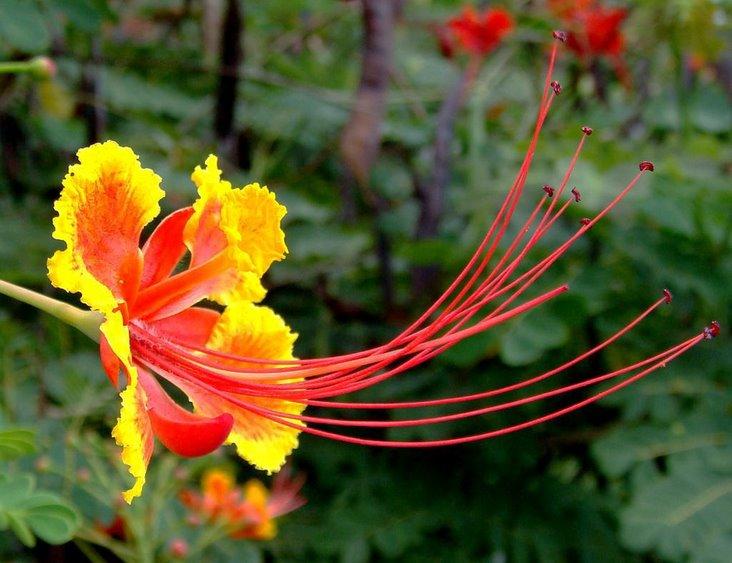

金凤花的繁殖方式
金凤花是用种子繁殖,从6月中旬至12月中旬,荚果陆续成熟,以9-10月份为成熟盛期,采集盛期成熟的果荚,置日光下暴晒,开裂后脱出种子,可以随采随播种,幼苗防寒越冬,也可将种子储藏翌年春播,种子千粒重约132克,发芽时气温需在20℃以上,以春季3月中下旬播种较宜,播前用60℃温水浸种,冷却后继续浸泡12小时,发芽快速,一般播种后三天即开始发芽,一周内发芽结束,发芽率约为60%。
用条播法,幼苗生长速度中等,苗期施氮肥2-3次追苗,10月份以后,停施氮肥,施钾肥一致,促使早期木质化,冬季注意覆盖防霜,1年生苗可出圃定植,2年生幼树,即可开花供观赏。如发生叶斑病,可用50%多菌灵可湿性粉500倍液防治。
金凤花的栽培技术
对肥力的要求不甚高,一般肥力中等、磷钾肥较高的土壤,开花繁茂,色泽亦鲜艳,水分充足,氮肥较高的土壤枝叶繁茂,开花亦较多,但色泽欠鲜艳,种植时宜施腐熟饼肥或垃圾作基肥,花前及开花盛期,追施磷钾肥,树形不甚美观,但具萌芽性,管理中可用截干或修枝整形,促使树冠丰满,也可3-5株种植于一处,以提高观赏效果。
病虫防治
白粉病
症状此病主要发生在叶片和嫩梢上。一般在6月开始发生,7月份以后叶面布满白色粉层。随后,在白粉层中形成黄色小粒点,颜色逐渐变深,最后呈黑褐色。传染途径病菌在病株残体和种子内越冬。翌年,当环境适宜时,病菌借风雨传播。8-9月为发病盛期。
防治方法:
栽植不过密,适当通风,加强肥水管理,增强植株的抗病力。将病叶、病株清除,集中销毁,减少传染源。
发病期间用15%粉锈宁可湿性粉剂1000-1200倍液,或70%甲基托布津可湿性粉剂1000倍液防治。在32℃以上的高温下避免喷药,以免发生药害。
褐斑病
金凤花褐斑病又称风仙花叶斑病,在中国南北各地均有发生。症状病害主要发生在叶片上。叶面病斑初为浅黄褐色小点,后扩展成圆形或椭圆形,以后中央变成淡褐色,边缘褐色,具有不明显的轮纹。严重患病的叶片上,病斑连片,导致叶片变得枯黄,直至植株死亡。传染途径病菌在风仙花病残体及土壤植物碎片上越冬。翌年当环境条件适宜时,病菌借风雨飞散传播。高温多雨的季节,易发病。
防治方法:
金凤花喜肥沃的砂质壤土,不耐涝。因此,种植以砂质壤土为宜,以利排水;盆栽金凤花,雨后应及时倒盆。秋末应将病叶、病株集中销毁,减少来年传染源。
发病初期用25%多菌灵可湿性粉剂300-600倍液,或50%甲基托布津100倍液,或75%百菌清1000倍液防治。
立枯病
症状病菌主要侵染根茎部,致病部变黑或缢缩,潮湿时其上生白色霉状物,植株染病后,数天内即见叶萎蔫、干枯,继而造成整株死亡。
传播途径:主要以菌丝或菌核的形式在土壤或病残体内越冬,土壤中的菌丝营腐生生活,不休眠。在田间,主要靠接触传染,即植株的根、茎、叶接触病土时,便会被土中的菌丝侵染,在有水膜的条件下,与病部接触的健叶即染病。此外,种子、农具及带菌堆肥等都可使病害传播蔓延。
防治方法:在发病初期拔除病株后喷洒75%百菌清可湿性粉剂600倍液,或60%多·福可湿性粉剂500倍液、20%甲基立枯磷乳油1200倍液。
原产地西印度群岛,中国云南、广西、广东和台湾均有栽培。为热带地区有价值的观赏树木之一。


金凤花的繁殖方式
金凤花是用种子繁殖,从6月中旬至12月中旬,荚果陆续成熟,以9-10月份为成熟盛期,采集盛期成熟的果荚,置日光下暴晒,开裂后脱出种子,可以随采随播种,幼苗防寒越冬,也可将种子储藏翌年春播,种子千粒重约132克,发芽时气温需在20℃以上,以春季3月中下旬播种较宜,播前用60℃温水浸种,冷却后继续浸泡12小时,发芽快速,一般播种后三天即开始发芽,一周内发芽结束,发芽率约为60%。
用条播法,幼苗生长速度中等,苗期施氮肥2-3次追苗,10月份以后,停施氮肥,施钾肥一致,促使早期木质化,冬季注意覆盖防霜,1年生苗可出圃定植,2年生幼树,即可开花供观赏。如发生叶斑病,可用50%多菌灵可湿性粉500倍液防治。
金凤花的栽培技术
对肥力的要求不甚高,一般肥力中等、磷钾肥较高的土壤,开花繁茂,色泽亦鲜艳,水分充足,氮肥较高的土壤枝叶繁茂,开花亦较多,但色泽欠鲜艳,种植时宜施腐熟饼肥或垃圾作基肥,花前及开花盛期,追施磷钾肥,树形不甚美观,但具萌芽性,管理中可用截干或修枝整形,促使树冠丰满,也可3-5株种植于一处,以提高观赏效果。
病虫防治
白粉病
症状此病主要发生在叶片和嫩梢上。一般在6月开始发生,7月份以后叶面布满白色粉层。随后,在白粉层中形成黄色小粒点,颜色逐渐变深,最后呈黑褐色。传染途径病菌在病株残体和种子内越冬。翌年,当环境适宜时,病菌借风雨传播。8-9月为发病盛期。
防治方法:
栽植不过密,适当通风,加强肥水管理,增强植株的抗病力。将病叶、病株清除,集中销毁,减少传染源。
发病期间用15%粉锈宁可湿性粉剂1000-1200倍液,或70%甲基托布津可湿性粉剂1000倍液防治。在32℃以上的高温下避免喷药,以免发生药害。
褐斑病
金凤花褐斑病又称风仙花叶斑病,在中国南北各地均有发生。症状病害主要发生在叶片上。叶面病斑初为浅黄褐色小点,后扩展成圆形或椭圆形,以后中央变成淡褐色,边缘褐色,具有不明显的轮纹。严重患病的叶片上,病斑连片,导致叶片变得枯黄,直至植株死亡。传染途径病菌在风仙花病残体及土壤植物碎片上越冬。翌年当环境条件适宜时,病菌借风雨飞散传播。高温多雨的季节,易发病。
防治方法:
金凤花喜肥沃的砂质壤土,不耐涝。因此,种植以砂质壤土为宜,以利排水;盆栽金凤花,雨后应及时倒盆。秋末应将病叶、病株集中销毁,减少来年传染源。
发病初期用25%多菌灵可湿性粉剂300-600倍液,或50%甲基托布津100倍液,或75%百菌清1000倍液防治。
立枯病
症状病菌主要侵染根茎部,致病部变黑或缢缩,潮湿时其上生白色霉状物,植株染病后,数天内即见叶萎蔫、干枯,继而造成整株死亡。
传播途径:主要以菌丝或菌核的形式在土壤或病残体内越冬,土壤中的菌丝营腐生生活,不休眠。在田间,主要靠接触传染,即植株的根、茎、叶接触病土时,便会被土中的菌丝侵染,在有水膜的条件下,与病部接触的健叶即染病。此外,种子、农具及带菌堆肥等都可使病害传播蔓延。
防治方法:在发病初期拔除病株后喷洒75%百菌清可湿性粉剂600倍液,或60%多·福可湿性粉剂500倍液、20%甲基立枯磷乳油1200倍液。
0
1
文章
Dummer. ゛☀
2017年08月31日

The mahogany tree (Swietenia mahagnoni) is such a lovely shade tree that it’s too bad it can only grow in USDA zones 10 and 11. That means that if you want to see a mahogany tree in the United States, you’ll need to head to Southern Florida. These attractive, fragrant trees form rounded, symmetrical crowns and make excellent shade trees. For more information about mahogany trees and mahogany tree uses, read on.
Mahogany Tree Information
If you read information about mahogany trees, you’ll find them both interesting and attractive. The mahogany is a large, semi-evergreen tree with a canopy that casts dappled shade. It is a popular landscape tree in Southern Florida.
Mahogany tree facts describe the trees as being very tall. They can grow 200 feet in height with leaves some 20 inches long, but it’s more common to see them growing to 50 feet or less. Mahogany tree information suggests that wood is dense, and the tree can hold its own in strong winds. This makes it useful as a street tree, and trees planted in medians form attractive canopies overhead.
Additional Mahogany Tree Facts
Mahogany tree information includes a description of the blossoms. These heat-loving ornamentals produce small, fragrant clusters of flowers. The blossoms are either white or yellow-green and grow in clusters. Both male and female flowers grow on the same tree. You can tell male from female flowers because male stamens are tube-shaped. The flowers bloom in late spring and early summer. Moths and bees love the flowers and serve to pollinate them. In time, woody fruit capsules grow in and are brown, pear-shaped and five inches long. They are suspended from fuzzy stalks in winter. When they split, they release the winged seeds that propagate the species.
Where Do Mahogany Trees Grow?
Where do mahogany trees grow, gardeners ask. Mahogany trees thrive in very warm climates. They are native to South Florida as well as the Bahamas and the Caribbean. The tree is also nicknamed Cuban mahogany and West Indian mahogany. They were introduced into Puerto Rico and the Virgin Islands over two centuries ago. Mahogany trees continue thriving in those places.
Mahogany tree uses vary from the ornamental to the practical. First and foremost, mahogany trees are used as shade and ornamental trees. They are planted in backyards, parks, on medians and as street trees. The trees are also raised and felled for their hard, durable wood. It is used to make cabinets and furniture. The species is getting increasingly rare and has been added to Florida’s endangered species list.

Mahogany Tree Information
If you read information about mahogany trees, you’ll find them both interesting and attractive. The mahogany is a large, semi-evergreen tree with a canopy that casts dappled shade. It is a popular landscape tree in Southern Florida.
Mahogany tree facts describe the trees as being very tall. They can grow 200 feet in height with leaves some 20 inches long, but it’s more common to see them growing to 50 feet or less. Mahogany tree information suggests that wood is dense, and the tree can hold its own in strong winds. This makes it useful as a street tree, and trees planted in medians form attractive canopies overhead.

Additional Mahogany Tree Facts
Mahogany tree information includes a description of the blossoms. These heat-loving ornamentals produce small, fragrant clusters of flowers. The blossoms are either white or yellow-green and grow in clusters. Both male and female flowers grow on the same tree. You can tell male from female flowers because male stamens are tube-shaped. The flowers bloom in late spring and early summer. Moths and bees love the flowers and serve to pollinate them. In time, woody fruit capsules grow in and are brown, pear-shaped and five inches long. They are suspended from fuzzy stalks in winter. When they split, they release the winged seeds that propagate the species.

Where Do Mahogany Trees Grow?
Where do mahogany trees grow, gardeners ask. Mahogany trees thrive in very warm climates. They are native to South Florida as well as the Bahamas and the Caribbean. The tree is also nicknamed Cuban mahogany and West Indian mahogany. They were introduced into Puerto Rico and the Virgin Islands over two centuries ago. Mahogany trees continue thriving in those places.

Mahogany tree uses vary from the ornamental to the practical. First and foremost, mahogany trees are used as shade and ornamental trees. They are planted in backyards, parks, on medians and as street trees. The trees are also raised and felled for their hard, durable wood. It is used to make cabinets and furniture. The species is getting increasingly rare and has been added to Florida’s endangered species list.
0
0
文章
Miss Chen
2017年08月29日

If you live in a warm climate or in zones 8 through 11, you can prune your knockout roses in the winter. One season occurs in the spring and another in the fall. Pruning mature knockouts in the winter makes sense, but get expert advice from your local nursery or extension service. To prune knockouts in the winter, follow these suggestions.

Step 1
Prune only mature plants that are established and are 2 or 3 years old.
Step 2
Sharpen your clean pruning equipment and always cut at a 45-degree angle.
Step 3
Remove any thin canes or any diseased or damaged canes. If your temperature only rarely drops below freezing, you may have rose pests and eggs that do not die as they would in an area where it freezes hard. Be on the look out for insect damage and remove any canes that look questionable.

Step 4
Strip most of the leaves from the roses in the winter, which makes them vulnerable to pests, and spray with a horticultural oil.
Step 5
Activate the knockout into growth and blooming by pruning it back a little in the late winter before your first growing season in the spring.
Step 6
Keep the roses under control. If you want it smaller than the standard 3 x 4-foot tall size, prune it back in the late spring or early fall after it has bloomed. Be careful not to clip off flower buds.
Step 7
Remove dead or old canes during mild climates ideally, but this can be done at any time. Also cut very thin canes that might be coming up from the ground. You don't have to deadhead knockouts, but you can if you like to keep them looking groomed.
Step 8
Prune mature plants by using the 1/3 rule each year in the winter. Remove 1/3 of the oldest canes and any stems that are damaged, diseased or dead. This will keep the bush vibrant.

Step 1
Prune only mature plants that are established and are 2 or 3 years old.
Step 2
Sharpen your clean pruning equipment and always cut at a 45-degree angle.
Step 3
Remove any thin canes or any diseased or damaged canes. If your temperature only rarely drops below freezing, you may have rose pests and eggs that do not die as they would in an area where it freezes hard. Be on the look out for insect damage and remove any canes that look questionable.

Step 4
Strip most of the leaves from the roses in the winter, which makes them vulnerable to pests, and spray with a horticultural oil.
Step 5
Activate the knockout into growth and blooming by pruning it back a little in the late winter before your first growing season in the spring.
Step 6
Keep the roses under control. If you want it smaller than the standard 3 x 4-foot tall size, prune it back in the late spring or early fall after it has bloomed. Be careful not to clip off flower buds.
Step 7
Remove dead or old canes during mild climates ideally, but this can be done at any time. Also cut very thin canes that might be coming up from the ground. You don't have to deadhead knockouts, but you can if you like to keep them looking groomed.
Step 8
Prune mature plants by using the 1/3 rule each year in the winter. Remove 1/3 of the oldest canes and any stems that are damaged, diseased or dead. This will keep the bush vibrant.
0
0
文章
Miss Chen
2017年08月29日

Rose bushes (Rosa spp.) must be pruned at least once or twice each year. Heavy pruning is done in winter or, in some climates, early spring. Roses are hardy in U.S. Department of Agriculture plant hardiness zones 2 through 11, depending on the species. Prune the roses again in summer or fall right after they bloom to tidy them up and encourage new cane growth. Roses that produce flowers in spring and again in fall bloom more profusely in fall when pruned right after their spring bloom cycle.

The Right Pruning Tool
Use sharp, scissor-type hand pruners to prune roses. Pour household disinfectant over the open hand pruner blades, and let it sit on them for a few minutes to sterilize them, preventing the spread of plant diseases. Rinse off the disinfectant with clear water, and dry the blades with a clean towel. Disinfectant can harm rose stem tissue.
Basics for All Roses
Deadhead, or remove, all remaining faded blooms. Do so by cutting each faded flower's stem ¼ inch above the first set of five leaflets. A flower stem cut higher than that point produces weak new stem growth that either will not have flowers or will have flowers that are smaller than normal.
Prune off all dead, diseased or crossing stems whenever you notice them throughout the growing season. Make each of those cuts at the base of a stem.
Make each pruning cut on a healthy rose cane or stem ¼ inch above a growth bud, which is usually where there are five leaflets. Also make each cut at a 45-degree angle parallel to the growth bud. Buds facing outward produce stems that grow away from the bush's center. Buds facing inward produce stems that grow toward the bush's center. Do not make a cut at too sharp of an angle or too close to the growth bud. A bud damaged by pruning does not grow a new stem.

Insect and Disease Protections
Seal the cut ends of stems that are wider than a pencil by using white household glue to keep out boring insects. Throw dead flowers and stem trimmings in the trash. Leaving them in the garden provides a growing environment for fungal and bacterial diseases that can infect rose bushes.
Shrub and Old Garden Roses
Shrub roses and antique or old garden roses should be trimmed to about two-thirds their heights when they finish blooming. This method is especially important for roses that bloom only once annually, in spring or summer. They bloom on "old wood," or stems that grew the previous year. Pruning them later in the growing season results in less stem growth and reduced blooming the following year.
Climbing Roses
Climbing roses should not be pruned until they are 2 to 3 years old. The stems that produce flowers on climbing roses are called lateral stems. After a climber finishes blooming, use hand pruners to cut each lateral stem ¼ inch above the second or third growth bud. Ever-blooming climbers need to have their old, woody canes completely removed. Those canes are 2 to 3 years old and brown or tan at their bases. Adjust the position of the remaining canes so they are spread evenly across the bushes' support structure. Once-blooming climbers and ramblers need to have their dead, weak or unproductive canes cut back to healthy, white tissue.
All Other Types of Roses
All other roses, including hybrid teas, should be trimmed only lightly after they bloom. Remove their spent blooms with disinfected hand pruners. Trim all their stems about only a few inches, just enough to give the bushes a neater appearance.

The Right Pruning Tool
Use sharp, scissor-type hand pruners to prune roses. Pour household disinfectant over the open hand pruner blades, and let it sit on them for a few minutes to sterilize them, preventing the spread of plant diseases. Rinse off the disinfectant with clear water, and dry the blades with a clean towel. Disinfectant can harm rose stem tissue.
Basics for All Roses
Deadhead, or remove, all remaining faded blooms. Do so by cutting each faded flower's stem ¼ inch above the first set of five leaflets. A flower stem cut higher than that point produces weak new stem growth that either will not have flowers or will have flowers that are smaller than normal.
Prune off all dead, diseased or crossing stems whenever you notice them throughout the growing season. Make each of those cuts at the base of a stem.
Make each pruning cut on a healthy rose cane or stem ¼ inch above a growth bud, which is usually where there are five leaflets. Also make each cut at a 45-degree angle parallel to the growth bud. Buds facing outward produce stems that grow away from the bush's center. Buds facing inward produce stems that grow toward the bush's center. Do not make a cut at too sharp of an angle or too close to the growth bud. A bud damaged by pruning does not grow a new stem.

Insect and Disease Protections
Seal the cut ends of stems that are wider than a pencil by using white household glue to keep out boring insects. Throw dead flowers and stem trimmings in the trash. Leaving them in the garden provides a growing environment for fungal and bacterial diseases that can infect rose bushes.
Shrub and Old Garden Roses
Shrub roses and antique or old garden roses should be trimmed to about two-thirds their heights when they finish blooming. This method is especially important for roses that bloom only once annually, in spring or summer. They bloom on "old wood," or stems that grew the previous year. Pruning them later in the growing season results in less stem growth and reduced blooming the following year.
Climbing Roses
Climbing roses should not be pruned until they are 2 to 3 years old. The stems that produce flowers on climbing roses are called lateral stems. After a climber finishes blooming, use hand pruners to cut each lateral stem ¼ inch above the second or third growth bud. Ever-blooming climbers need to have their old, woody canes completely removed. Those canes are 2 to 3 years old and brown or tan at their bases. Adjust the position of the remaining canes so they are spread evenly across the bushes' support structure. Once-blooming climbers and ramblers need to have their dead, weak or unproductive canes cut back to healthy, white tissue.
All Other Types of Roses
All other roses, including hybrid teas, should be trimmed only lightly after they bloom. Remove their spent blooms with disinfected hand pruners. Trim all their stems about only a few inches, just enough to give the bushes a neater appearance.
0
0





